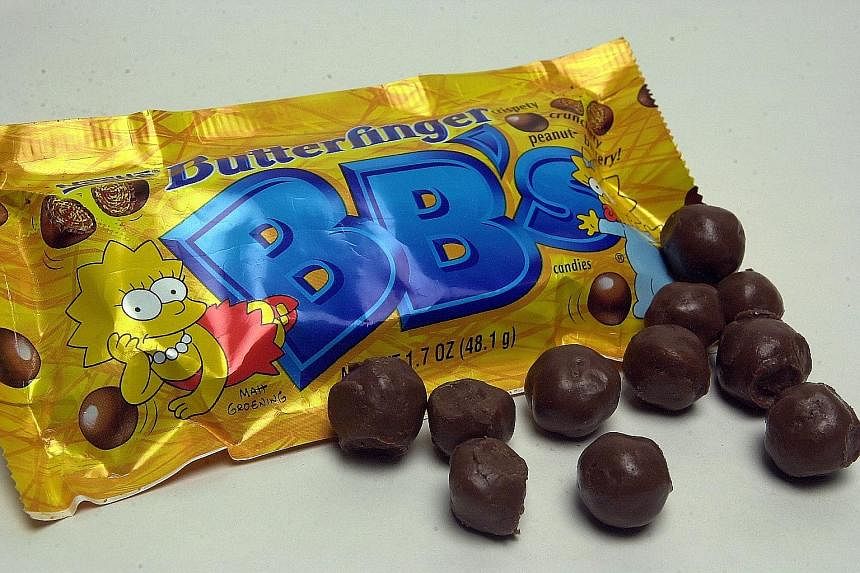London - Picture sipping a cold glass of clear Coke or snacking on cream-coloured Cheetos. It is hard to imagine, but as consumers demand healthier and more natural products, junk food could become a lot less colourful.
General Mills announced last Monday it will remove artificial flavours and colours from its cereals in the next few years. The announcement comes after several food and beverage giants, including Nestle, Hershey and Kraft, have committed to removing artificial ingredients from an array of products in the past few months.
But changing ingredients on an industrial scale is not quite as simple as it might be in the kitchen. Retaining the taste and appearance of these foods without using artificial ingredients has proven a big challenge, says Mr Paul Bakus, president of corporate affairs at Nestle. "Consumers don't want to trade off the taste they've come to love."
Nestle announced earlier this year that it would remove all artificial colours and flavours from its chocolates - representing more than 250 products across 10 brands - by the end of this year. The company also has committed to removing all artificial flavours and lowering the sodium in its frozen pizzas and snacks, including Hot Pockets and DiGiorno pies.
Of all the challenges that a move like this poses, replacing artificial colours has proven to be one of the toughest, Mr Bakus says.
For example, Nestle struggled to replicate the bright colour that Yellow 5, a food dye also known as tartrazine, adds to a product such as a Butterfinger chocolate bar. The company decided on annatto, an orange-red colouring derived from the seeds of the achiote tree found in Central and South America.
But it is not possible to simply swap the synthetic colour for the natural one across the board. Each product has its own set of unique ingredients, Mr Bakus says, meaning each has to be reformulated differently to incorporate the new colour.
"It's not a question of, 'Hey, we've found the solution for yellow', because all products are manufactured differently so we need different processes for each," he says.
"This is where the creative minds from our technical group and our suppliers' technical group come into play."
The risk when making an ingredient change is alienating the consumer, who has come to expect a certain taste and experience when eating or drinking a well-known product, Mr Bakus says.
"You might have to introduce a flavour or taste that you don't want to," he said. "As a manufacturer, are you willing to accept the trade-off?"
The process of finding suitable natural ingredients has taken nearly five years, he says, but Nestle will finally start rolling out the reformulated products in the coming months. "If you talk to our technical folks, this has been a huge challenge," he says.
Changing ingredients and product formulations is not something companies do lightly, said Prof John Coupland, a professor of food science at Pennsylvania State University and a spokesman for the Institute of Food Technologists, a non-profit society of food scientists.
Sometimes, regulations governing food additives change, such as with the recent trans fat ban in the United States, while other times, ingredient changes are driven by consumer perception.
For example, a company may have always added propionate, a type of preservative, to its bread to prevent mould. But if consumers now view propionate as "unnatural" and a company wants to remove it from its recipe, food scientists must work out the impacts across the product's life cycle.
If propionate-free bread moulds too quickly, for example, the company may have to change its stocking practices or search for a more natural replacement that appeals to health-conscious consumers.
A company might consider using the same ingredient but in a less chemical form, such as replacing black pepper extract with black pepper. But it is tricky: The flavour and strength of spices such as black pepper can vary widely.
Using an extract allows taste to be very strictly controlled, so a company is more likely to be able to stick with a standard recipe with little variation between batches or locations.
"This sounds silly but is a huge deal for industrially manufactured anything," Prof Coupland says. "Using black pepper, they will have to either relax their tolerances - and fear a customer complaining that 'my sandwich didn't taste right' - or add in some quality control step."
At other times, an ingredient adds aesthetic value such as colour to a product. Aside from looking for a natural ingredient to replace the synthetic colourant, a company might also consider simply eliminating the colour altogether.
Zevia, which produces zero-calorie sodas free of artificial sweeteners, recently announced it would remove the caramel colouring from its soft drinks, including its cola and ginger ale, making them clear.
Zevia did extensive consumer research - both on health-conscious buyers as well as on drinkers of conventional sodas such as Coke or Pepsi - and said both groups expressed concern about the health effects of artificial ingredients.
"For us, it was a very obvious choice to listen to what our shoppers wanted," Zevia chief executive Paddy Spence says.
That said, all this effort towards "natural" would not necessarily make the products much healthier, says Mr Arthur Gillett, co-founder of HowGood, an organisation that rates the sustainability of grocery store products.
In many cases, he says, removing artificial ingredients is just "making bad food slightly more palatable".
Small ingredient changes would not generally improve the nutritional profile of the foods, he says, and research organisation HowGood's ratings for many of these products will increase less than 3 per cent.
Meanwhile, sourcing all ingredients from responsible growers - another difficult and potentially expensive task - would have more of an impact, he says. "There's a lot of bigger work to do."
The Guardian


